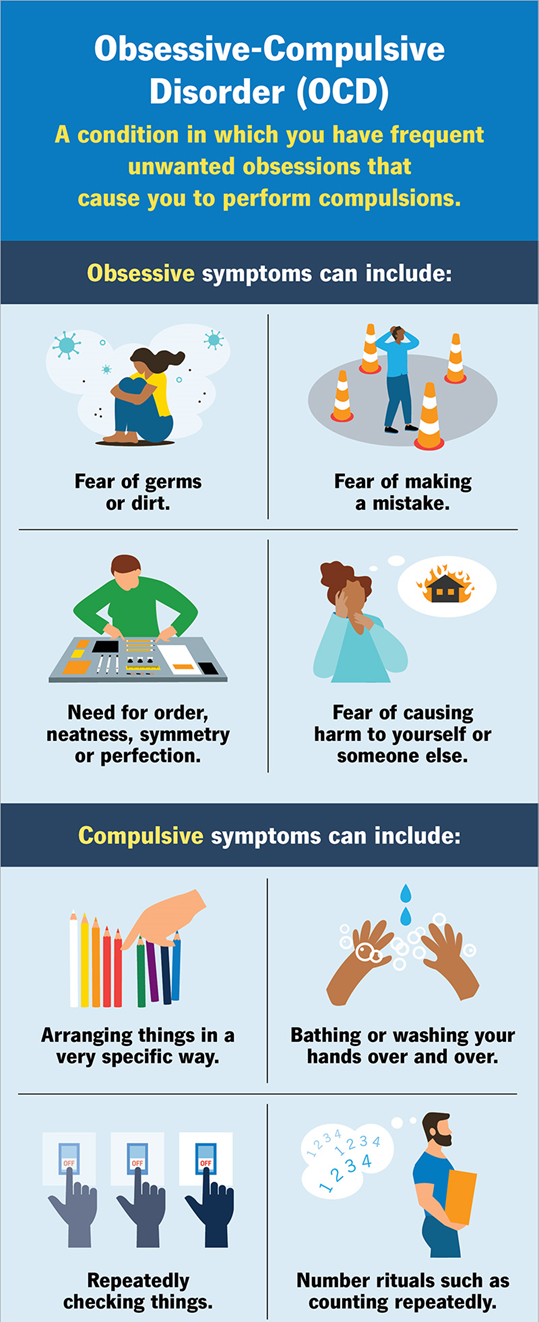A client diagnosed with Obsessive-Compulsive Disorder has developed a number of compulsive washing rituals over the years. The nurse recognizes that these behavioral rituals serve which purpose?
Draws attention and approval from significant others.
Provides temporary and partial relief from anxiety.
Increases the inhibitory powers of their superego.
Blocks delusions and hallucinations from awareness.
The Correct Answer is B
Choice A Reason:
Draws attention and approval from significant others.
This statement is incorrect. Compulsive washing rituals in Obsessive-Compulsive Disorder (OCD) are not typically performed to draw attention or gain approval from others. Instead, these rituals are driven by an internal need to reduce anxiety and distress associated with obsessive thoughts. The primary function of these behaviors is to manage the individual’s own anxiety rather than to seek external validation.
Choice B Reason:
Provides temporary and partial relief from anxiety.
This is the correct response. Compulsive washing rituals in OCD are performed to alleviate the intense anxiety and distress caused by obsessive thoughts. Although the relief is temporary and partial, it reinforces the behavior, creating a cycle where the individual feels compelled to repeat the ritual to manage their anxiety. This temporary relief is a key characteristic of compulsive behaviors in OCD.

Choice C Reason:
Increases the inhibitory powers of their superego.
This statement is incorrect. The concept of the superego is related to Freud’s psychoanalytic theory, where it represents the internalized moral standards and ideals. Compulsive washing rituals in OCD are not performed to increase the inhibitory powers of the superego but rather to reduce anxiety and distress. The rituals are a response to obsessive thoughts rather than a means of enhancing moral inhibition.
Choice D Reason:
Blocks delusions and hallucinations from awareness.
This statement is incorrect. Delusions and hallucinations are more commonly associated with psychotic disorders, such as schizophrenia, rather than OCD. Compulsive washing rituals in OCD are not intended to block delusions or hallucinations but to manage anxiety related to obsessive thoughts. The focus of these rituals is on reducing distress rather than addressing psychotic symptoms.
Nursing Test Bank
Naxlex Comprehensive Predictor Exams
Related Questions
Correct Answer is A
Explanation
Choice A Reason:
Lorazepam is a benzodiazepine commonly used to manage acute agitation and anxiety. It works by enhancing the effect of the neurotransmitter GABA, which has a calming effect on the brain. Lorazepam is often administered in emergency situations to quickly reduce agitation and prevent escalation to violence. Its rapid onset of action makes it an ideal choice for managing acute episodes of agitation and potential assault.

Choice B Reason:
Valproic acid is an anticonvulsant and mood stabilizer used primarily for the treatment of epilepsy and bipolar disorder. While it can help manage mood swings and prevent manic episodes, it is not typically used for the immediate management of acute agitation or aggression. Its effects are not rapid enough to address an escalating situation effectively.
Choice C Reason:
Bupropion is an atypical antidepressant used to treat major depressive disorder and to support smoking cessation. It works by inhibiting the reuptake of norepinephrine and dopamine, but it does not have the sedative properties needed to manage acute agitation or aggression. Therefore, it is not suitable for immediate intervention in a potentially violent situation.
Choice D Reason:
Sertraline is a selective serotonin reuptake inhibitor (SSRI) used to treat depression, anxiety disorders, and other mood disorders. While it is effective for long-term management of anxiety and depression, it does not have the rapid calming effects required for managing acute agitation or potential assault. SSRIs generally take several weeks to achieve their full therapeutic effect.
Correct Answer is C
Explanation
Choice A Reason:
Labeling mild anxiety as pathologic and suggesting that it warrants postponing the test is not accurate. Mild anxiety is a normal response to stress and can actually be beneficial in certain situations. It helps to increase alertness and focus, which can improve performance on tasks such as taking a test. Pathologic anxiety, on the other hand, is excessive and persistent, interfering with daily functioning and requiring clinical intervention.
Choice B Reason:
The idea that mild anxiety may be transferred to classmates and result in generalized anxiety disorder is not supported by evidence. Anxiety is a personal experience and while it can be influenced by the environment, it is not something that can be directly transferred from one person to another. Generalized anxiety disorder is a chronic condition characterized by excessive worry about various aspects of life, and it develops due to a combination of genetic, environmental, and psychological factors.
Choice C Reason:
While severe anxiety can interfere with cognitive ability, mild anxiety typically does not. In fact, mild anxiety can enhance cognitive performance by increasing alertness and focus. It is only when anxiety becomes overwhelming that it starts to impair cognitive functions such as memory, attention, and problem-solving.

Choice D Reason:
Mild anxiety is conducive to concentration and problem-solving. This level of anxiety can act as a motivator, helping individuals to focus better and perform tasks more efficiently. The Yerkes-Dodson law suggests that there is an optimal level of arousal (including anxiety) that enhances performance. Too little arousal can lead to underperformance, while too much can cause performance to deteriorate.
Whether you are a student looking to ace your exams or a practicing nurse seeking to enhance your expertise , our nursing education contents will empower you with the confidence and competence to make a difference in the lives of patients and become a respected leader in the healthcare field.
Visit Naxlex, invest in your future and unlock endless possibilities with our unparalleled nursing education contents today
Report Wrong Answer on the Current Question
Do you disagree with the answer? If yes, what is your expected answer? Explain.
Kindly be descriptive with the issue you are facing.
